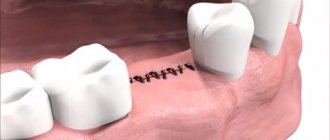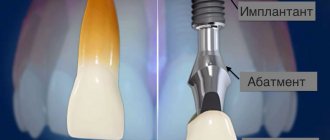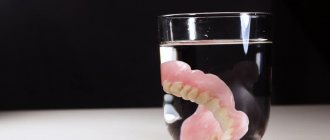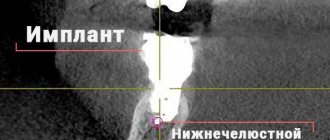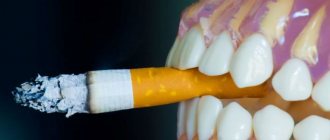Suturing after tooth extraction is a standard procedure. The doctor closes the hole when indicated or at the request of the patient. Tightly fixed edges of the wound speed up the healing process, relieve pain, and reduce the risk of complications. Immediately after the surgical operation, the dental surgeon explains the rules of hygiene - how to care for the socket, what to do if the sutures come apart after tooth extraction.
Indications for suturing after tooth extraction
In surgical dentistry, it is customary to suture the socket of the removed unit if:
- wisdom teeth were extracted and figure eights were removed;
- there is a risk of severe bleeding - according to patient examinations or as a preventive measure;
- Extirpation of impacted and dystopic teeth was performed;
- the removal was difficult - the crown part of the tooth was severely destroyed or the roots of the extracted unit were significantly curved.
All surgical removal operations, when the dentist cuts the gum and injures the jaw tissue, involve suturing the edges of the resulting hole.
Also, the socket of the extracted tooth is sutured after the implant is installed in it. The procedure is carried out as part of a one-stage implantation with delayed prosthetics. An implant surgeon combines two operations. After extracting the tooth and assessing the condition of the socket using a control x-ray, the doctor implants a dental implant, which will subsequently become a support for a permanent dental crown. The operation is performed only after preliminary preparation, since the patient must undergo a full examination and hardware diagnostics.
Types of seams. Types of threads
In each case, when the dental surgeon sutures the gum, he decides which suture to use.
Seams can be intermittent or continuous .
The first type is more common and is characterized by the overlapping of separate, unrelated stitches (pictured below), and each is secured with its own knot.
This maintains the integrity of the fabrics, even if one of the stitches fails and falls off.
There is continuous suturing. All stitches are made with a single suture thread, securing them with a common knot. It's faster, but any damage to one stitch can ruin the entire thread construction.
Pain after suturing the hole: pathology and norm
Pain in the suture area is normal. Injury to the gums due to major surgery causes pain, especially in the first days.
The patient must understand that tooth extraction means damage to the ligaments that hold the tooth in the gum, rupture of nerve fibers and blood vessels. During the operation, the pain is blocked by the anesthetic, but after the anesthesia wears off, discomfort is observed at the site of the sutures.
The following sensations should not cause concern:
- aching pain for the first 24 hours after removal;
- slight swelling of the tissues in the surgical area
- discomfort and slight pain when opening the mouth;
- short-term increase in body temperature.
In rare cases, after a complex removal, the patient may experience chills, facial swelling, purulent discharge, cough, and nausea. These signs should not be ignored - it is better to immediately seek help from a specialist.
Suture removal after implantation
Patients are always interested in the question “On what day after implantation are the sutures removed?” Usually, for those whose healing went well and there was no suppuration, the threads are removed after 10-14 days. All this time, the area above the implant must be treated with antiseptics and protected from injury. The first days after surgery, you may feel as if threads are being pulled. Often there is a discharge of ichor. After the thread extraction procedure, which is absolutely painless, the doctor will recommend continuing the preventive course.
Types of suture materials in surgical dentistry
In dental clinics, different types of threads are used to fix the edges of the sockets during tooth extraction:
- Synthetic, self-resorbable due to hydrolysis reaction. These are threads with a hypoallergenic composition that guarantee reliable fixation of the wound edges for about a month.
- Natural, absorbable, enzyme-based surgical suture material. The stitches disappear in 10-100 days, and the thread segments are safely removed from the human body.
- Synthetic regular threads. Made from silk, nylon, polyester. They require mechanical removal after complete healing of the hole.
Recommendations for further gum care
In a broad sense, dental implantation is not completed after the sutures are removed. The postoperative wound heals completely only after three to four weeks. The artificial root is overgrown with bone tissue within several months. And only after the completion of the regeneration and osseointegration processes can we say that the implant is securely installed and can be loaded with a prosthetic structure.
After removing the sutures from the wound, you should follow the dentist's recommendations. In particular, it is important:
- after eating, rinse your mouth with disinfectant solutions;
- brush your teeth with care, without touching the implantation area;
- Until the wound is completely healed, do not neglect regular oral hygiene.
Compliance with the doctor’s prescriptions and recommendations helps the patient go through the first part of the rehabilitation period without complications.
How long do you need to walk with stitches?
The patient's actions depend on the type of suture material used by the doctor. If the doctor used a non-absorbable option, a control appointment is scheduled after 7-10 days. During the examination, the surgeon assesses the speed of healing and the condition of the wound. Decides on the need to remove sutures.
The procedure is quick and atraumatic. The thread is cut into small segments and painlessly removed from the gums. If the patient experiences discomfort and anxiety, the doctor can use topical anesthesia.
Self-absorbing sutures disintegrate on their own in about three weeks. The patient may not notice the material disappearing from the wound. Especially if healing is going well and the hole is not bothering you.
When and how is the procedure for removing sutures in dentistry performed?
The time for suture removal is determined by the dentist, guided by the process of regeneration (healing) of the soft tissues of the mucous membrane, which depends on:
- on the age of the patient;
- complications of surgical intervention;
- presence of complications.
Usually, sutures are removed 5-10 days after they are applied.
The dentist removes sutures as follows:
- the surface of the wound is disinfected with an antiseptic;
- if the patient has a low pain threshold, local anesthetics are used (but usually this is not necessary);
- Using surgical scissors and anatomical tweezers, the dentist carefully cuts and removes the threads from the healed wound;
- a visual examination is carried out to check the integrity of the wound;
- Disinfection of the suture prevents the risk of wound inflammation.
Sometimes sutures are removed due to the risk of suppuration in the area of the operation. In this case, the sutures are removed, sanitizing procedures are performed and appropriate antimicrobial therapy is prescribed.
Complications: what to look out for
Even a sutured hole can become a source of problems or inflammation. The patient monitors the condition himself and should consult a doctor if any alarming symptoms appear:
- Heavy bleeding - for a day or more.
- Continuous pain - throbbing, especially severe at night or while eating.
- Swelling is gumboil in the area of tooth extraction.
- Redness is not only a change in the color of the gums, but also redness on the face in the projection of the extraction area.
- Blood in saliva - in the first three days after surgery.
- Increase in body temperature.
The listed symptoms indicate pathological processes and require urgent consultation with a doctor. After the examination, the doctor will prescribe treatment and decide on re-suturing.
Sinus lift
Osteoplasty, which is performed in the lateral parts of the upper jaw, is called sinus lifting. The operation time in professional hands will be about 15 minutes. And here it’s not a matter of haste, but of the level of the specialist. The operation is carried out as follows:
- The membrane of the maxillary sinus is lifted with a special instrument;
- The doctor inserts a previously prepared graft into the newly formed space;
- End of surgery.
After surgery, the volume of the maxillary sinuses decreases slightly in size, but this does not interfere with breathing function. There are two types of sinus lifting: open type and closed type. Open involves cutting and folding back a flap of soft gum tissue, and subsequent drilling of the maxillary sinuses. Finally, stitches are placed on the gums for effective wound healing. The closed sinus lift method is a more gentle method that does not require subsequent stitches. But there is a condition that is important to comply with. The height of the bone must be at least 4 mm at the site proposed for implantation.
Sutures after bone grafting and sinus lifting are always placed tightly and firmly using special threads. They are divided into 2 types:
- Absorbable;
- Non-absorbable.
The first includes the legendary catgut, the sutures of which can remain in the oral cavity for up to 2 weeks. To prevent them from coming undone, they are tied with surgical and conventional knots. It happens that it can cause a local inflammatory reaction, as it is a foreign protein-containing material. But it is better not to use catgut threads if a local inflammatory reaction is possible. For example, this is bone tissue transplantation, the use of membranes that have tissue restoration properties in dental implantology.
Synthetic sutures for bone grafting and sinus lifting are made of Dexon and/or Vicryl. They are easier to use than catgut, but require knowledge in tying surgical knots. Resorption usually occurs after 1 month, they do not cause inflammation, but they need to be removed a maximum of 10 days after surgery.
The non-absorbable material primarily includes silk, which is produced from a protein secreted by the silkworm. This thread is easy to tie, it is strong and pliable, it is better to use surgical knots. But there is also a drawback - such threads often cause inflammation of the oral mucosa. It's all about a foreign protein that causes an inflammatory-allergic reaction. The next type of thread is braided polystyrene thread; its strength is comparable to silk, but does not cause tissue inflammation.
For fixation, a few knots are sufficient, which are tied on opposite sides and supplemented with surgical ones. Such threads are coated with silicone, polybugylate or polytetrafluoroethylene solutions, which reduce inflammatory reactions and give them elasticity. Monofilament sutures are another type of non-absorbable sutures that are a single thread made from polytetrafluoroethylene. They have good mechanical, anti-inflammatory and adaptive properties. They are often used in the application of periodontal membranes. But the ends of the threads must be covered with a bandage, as they have hard ends that can damage the mucous membranes of the lips and cheeks.
What to do to prevent sutures from coming apart after tooth extraction
To prevent the sutures from coming apart prematurely, the patient needs to follow a few simple rules. Among them:
- Do not pry, touch or try to pull out the seams with your hands, toothpicks, or improvised objects.
- Avoid eating for the first 2 hours after surgery, do not smoke for 3-24 hours.
- Carry out all mandatory hygienic procedures for caring for the oral cavity, while brushing your teeth with extreme caution.
- Avoid eating hard, hot and cold foods in the first days after removal.
- Replace rinsing with antiseptic baths, when the medicinal composition is kept in the mouth for 1-1.5 minutes and spat out.
Compliance with all recommendations guarantees fast and safe healing. Ignoring advice can provoke wound infection, suppuration and suture separation, and the development of an inflammatory process.
Prevention of seam dehiscence
The postoperative wound is sutured with strong elastic threads. They do not diverge spontaneously. But if the patient violates the doctor’s recommendations, such a complication is possible. To prevent sutures from coming apart after implantation, you need to:
- do not eat for three hours after implant placement;
- for the first two days, apply cold compresses according to the regimen prescribed by the dentist;
- use rinses or baths prescribed by your doctor;
- do not chew on the side of the operation;
- refrain from spicy, hot, hard, sticky foods until the stitches are removed;
- give up physical activity.
